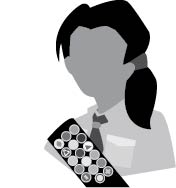In 2013, then-senior boy scout Ryan Andresen’s Eagle rank application was denied by the Pleasant Hill-based Mount Diablo-Silverado Boy Scouts Council after 12 years of scouting experience, including fulfilling rank requirements, earning at least 21 merit badges and demonstrating extensive leadership.
Ironically, Andresen, who built a “tolerance wall” as a Scout project, soon discovered that the reason for the organization’s rejection was that his homosexuality did not correspond with membership standards. As a result, the Andresens began their campaign to support the quest for homosexual boys to be embraced by the scouting organization.
A year later, Pascal Tessier became the first gay Eagle Scout, overturning the organization’s ban on “open and avowed homosexuals.” One year ago, Boy Scouts of America (BSA) announced another new policy that goes against the organization’s conservative roots: It will incorporate female scouts into the traditionally all-male program.
The organization will also be opening the upper ranks of Boy Scouts to girls in February by creating co-ed troops. The program’s name will then also change to Scouts BSA in order to avoid confusion with the unaffiliated Girl Scouts organization.
While the Girl Scouts organization is made up of thousands of troops across the country, their programs and activities differ from those in BSA. For example, Girl Scouts do more activities based on the arts, while Boy Scouts prioritize the sciences and outdoor activities like camping and hiking.
While the decision to include girls in the troop ultimately lands on the adult scoutmaster, co-ed BSA troops will share an identification number and participate in outings together.
Scoutmaster Tony Chun of the Los Altos-based BSA troop 888 said that they will have a sister troop made up solely of girls starting next year. The sibling troops will be participating in the same activities, have the same meeting times and will take part in ceremonies such as the opening and closing flag ceremonies together.
In order to differentiate the two troops but acknowledge the relation, the sister troop number will have a “4” in front of it, resulting in “Troop 4888.” The two troops will be managed by the same parent committee, he said.
Like existing BSA troops, the sister scout troop will have a scout-elected Senior Patrol Leader and a female scoutmaster over age 21.
Sophomore Boy Scout Arnav Mangal, who has participated in scouting since elementary school, said he was proud of the organization for opening the door to scouts who are a part of the LGBTQ community.
“Boy Scouts should be open to any boy,” he said. “The main purpose is to unite together and to learn new skills that you use in life. Just because of the way someone feels about other boys doesn’t mean they can’t be a part of the same activity.”
Mangal also agreed with the change to allow girls into troops. He said adding girls changes the dynamic of the troop but also allows girls to partake on new adventures.
“I think that it is great that girls will get the same opportunities that Boy Scouts have had for years,” Mangal said. “Some boys may feel uncomfortable at first because of a sudden change, but changes are just a part of life.”
In Mangal’s opinion, skills like wilderness survival techniques and shooting sports that aren’t taught in Girl Scouts are “great things for everyone to learn.”
Junior Connor Galvin, who has earned the rank of Eagle Scout, thinks the addition of girls to the troop will have minimal impact on his troop. Since the majority of activities in life include males and females working together, the change will flow smoothly, he said.
Although the existence of co-ed troops is a new concept in the U.S., countries like Canada have successfully used a joint model for many years.
Galvin said there is currently only one elementary school girl on her way to joining Cub Scouts with Troop 566 of Saratoga, but local BSA troops are actively looking for girls to join their troop by handing out flyers.
Chun said that the inclusion of girls will benefit the scouts as well as their parents, since it provides an opportunity for parents with children of both genders to have their children participate in the same activities.
Girl Scouts USA, however, is currently suing Scouts BSA over trademark infringement in a Manhattan federal court. Girl Scouts believes that BSA’s rebranding has caused the public to confuse Girl Scouts and BSA as a joint organization or to think that Girl Scouts no longer exists.
In response, BSA has stated that they applaud Girls Scouts for character and leadership lessons that they instill in their scouts.
Despite the dispute over nomenclature, Girl Scout Nitya Marimuthu, a sophomore, agrees that BSA has taken a step in the right direction by becoming more gender inclusive.
“If you really want to join Boy Scouts, or you really want to join Girl Scouts, your gender shouldn’t limit you to which one you can join,” Marimuthu said.
While the organizations cannot accurately foresee the effects of integrating mixed gender troops, one sentiment from the scouts themselves remains consistent: They will welcome their new troop members.
“I’m totally open to girls joining Boy Scouts,” Mangal said. “Every scout is a scout.”
























